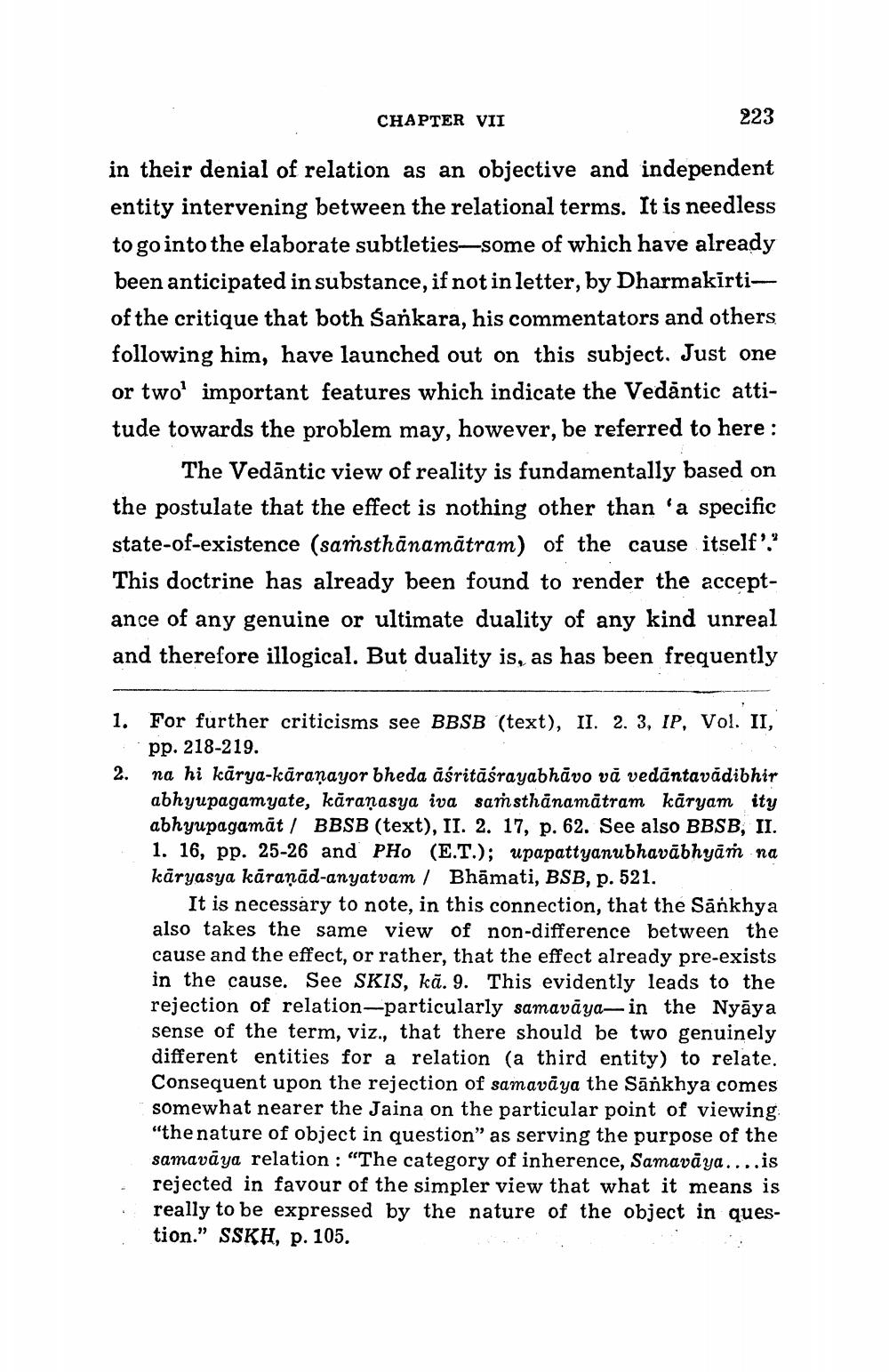________________
CHAPTER VII
223
in their denial of relation as an objective and independent entity intervening between the relational terms. It is needless to go into the elaborate subtleties—some of which have already been anticipated in substance, if not in letter, by Dharmakirtiof the critique that both Sankara, his commentators and others. following him, have launched out on this subject. Just one or two important features which indicate the Vedāntic attitude towards the problem may, however, be referred to here :
The Vedāntic view of reality is fundamentally based on the postulate that the effect is nothing other than 'a specific state-of-existence (saṁsthānamātram) of the cause itself'.' This doctrine has already been found to render the acceptance of any genuine or ultimate duality of any kind unreal and therefore illogical. But duality is, as has been frequently
1. For further criticisms see BBSB (text), II. 2. 3, IP, Vol. II,
pp. 218-219. 2. na hi karya-kāraṇayor bheda äśritāśrayabhāvo vă vedantavădibhir
abhyupagamyate, kāraṇasya iva saṁsthanamätram kāryam ity abhyupagamāt / BBSB (text), II. 2. 17, p. 62. See also BBSB, II. 1. 16, pp. 25-26 and PHO (E.T.); upapattyanubhavābhyāṁ na karyasya kāraņād-anyatvam / Bhāmati, BSB, p. 521.
It is necessary to note, in this connection, that the Sāńkhya also takes the same view of non-difference between the cause and the effect, or rather, that the effect already pre-exists in the cause. See SKIS, kā. 9. This evidently leads to the rejection of relation-particularly samavāya— in the Nyāya sense of the term, viz., that there should be two genuinely different entities for a relation (a third entity) to relate. Consequent upon the rejection of samavāya the Sāňkhya comes somewhat nearer the Jaina on the particular point of viewing "the nature of object in question" as serving the purpose of the samavāya relation : "The category of inherence, Samavāya....is rejected in favour of the simpler view that what it means is really to be expressed by the nature of the object in question." SSKH, p. 105.




